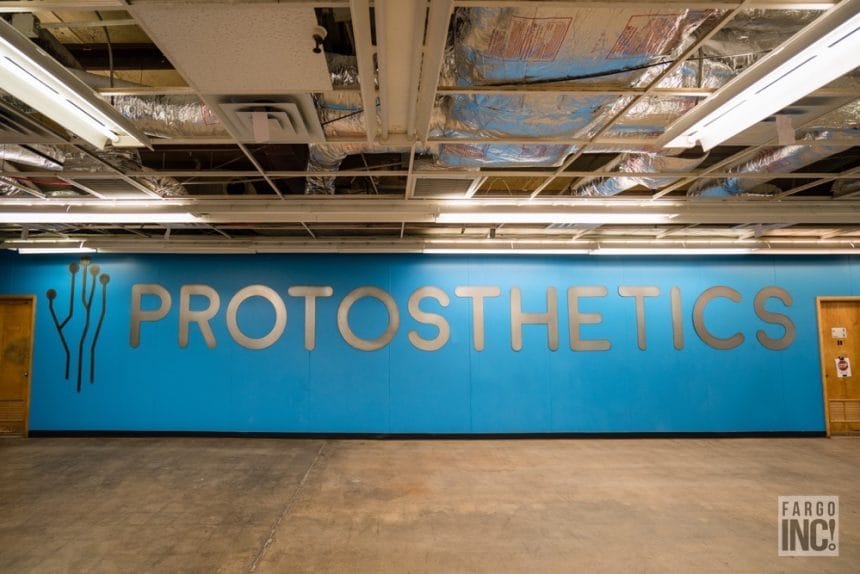Photos by Paul Flessland & Hillary Ehlen and courtesy of Protosthetics
$100,000.
Cooper Bierscheid couldn’t believe what he was hearing when one of his professors told him what it was going to cost to outfit his grand nephew—who was born missing both arms above the elbow—for a pair of prosthetic arms.
Bierscheid, who was an undergraduate in the NDSU College of Engineering at the time and looking for a senior design project, knew he could do better.
So in 2015, after turning down a dream job at 3M in the Twin Cities, he founded Protosthetics, a Fargo-based company that uses 3D printing to create ultra-durable, low-cost prosthetics and orthotics.
He later enlisted serial entrepreneur Josh Teigen to help take the company to the next level, and after a year and a half in Barnesville, Minnesota, in May of this year, Protosthetics moved into a new space on Fourth Street in Downtown Fargo. Teigen gave us a tour of their new(ish) digs.
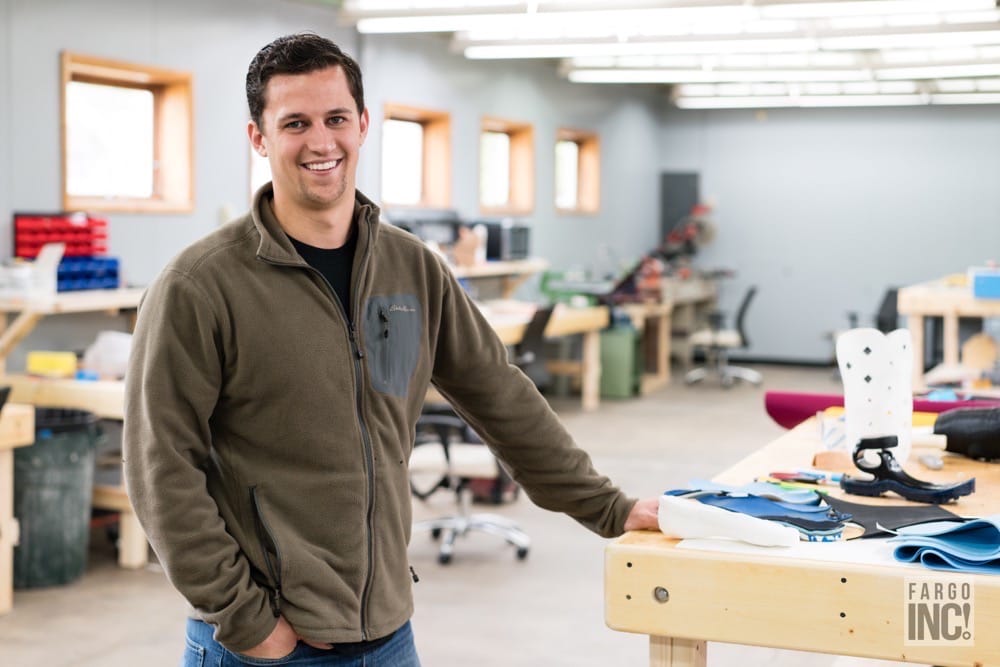

The building, which sits kitty-corner to Sanford Medical Center in Downtown Fargo, is owned by commercial developer Kilbourne Group and is slated to be demolished in a couple years time. If that happens, Protosthetics will be looking for a new home sooner than later, but Teigen’s okay with it.
“It’s a medium-term solution for us,” he says. “Hopefully we can stay longer, but we’ll see.”
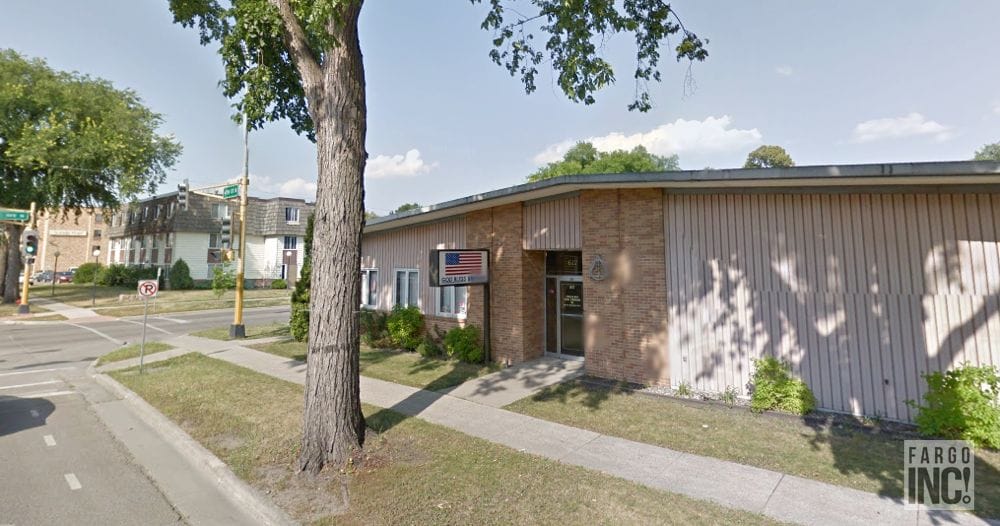
The space used to house Welu Dental Laboratory, a leading manufacturer of dental crowns and gold teeth. The company stored a large amount of gold on site, which was housed in a two-stage vault that held a variety of precious metals.
“We actually cracked the safe,” Teigen says. “Now we say it’s the intern office.”
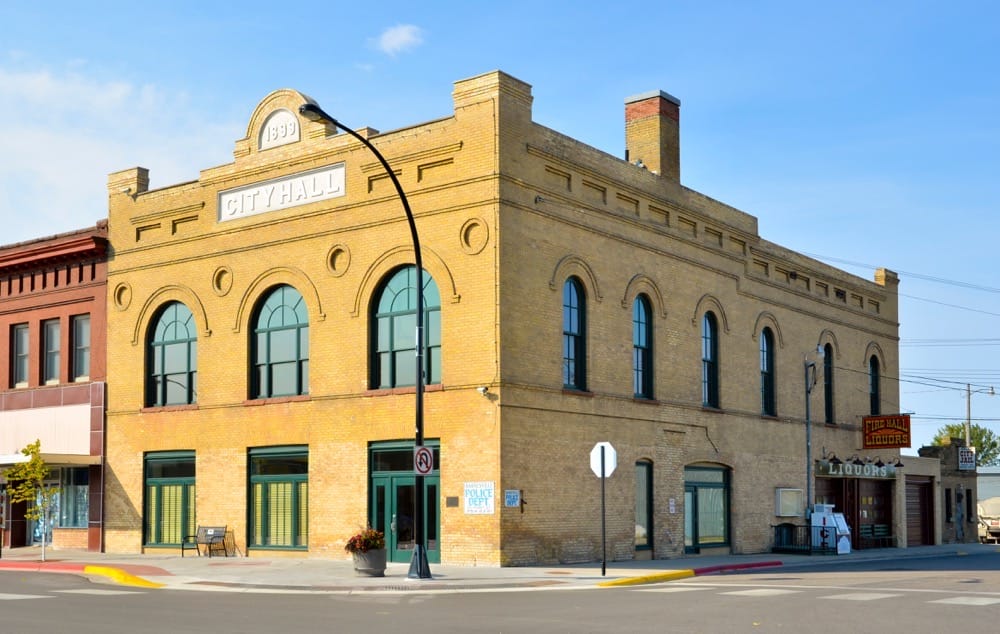
When you think of a high-tech startup that creates artificial limbs with 3D printers, you probably don’t picture their headquarters in a small, rural town. That’s exactly where they got their start, though, initially leasing a space in Barnesville, Minnesota.
“There are only so many facilities in Barnesville,” Teigen says. “So when we were looking for more space, we came and toured a couple different spots in Fargo. Being here is ideal for recruiting talent and finding workers.
“After we toured this building, we said, you know, we don’t really need a super high-end space. We’re a manufacturing company, don’t have a lot of foot traffic and don’t really have any visitors. We toured this, and it had plenty of space and was kind of perfect for us from a layout standpoint.
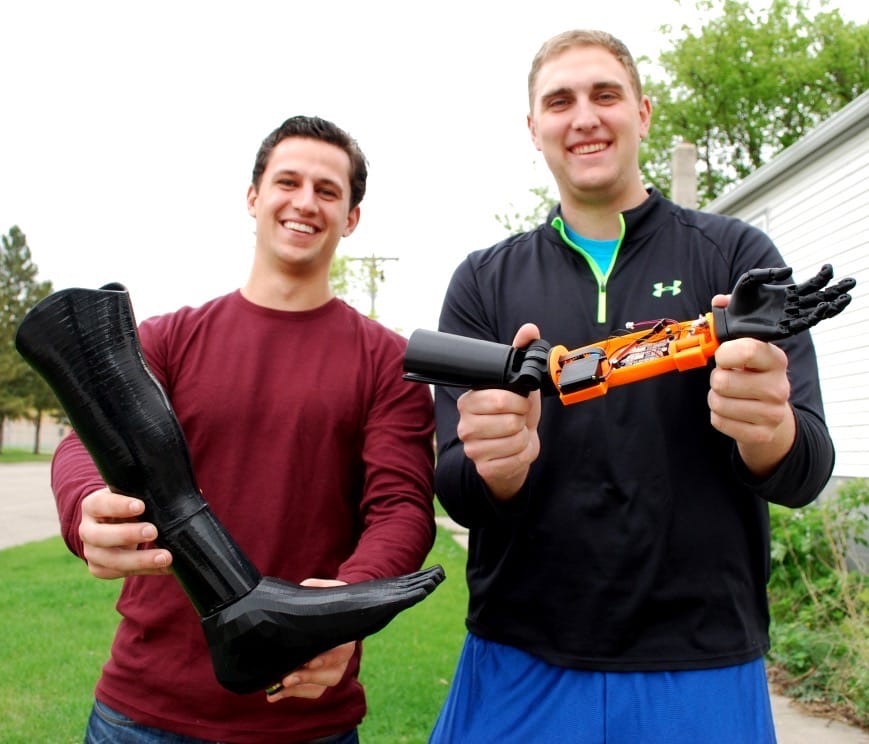
As if you needed another reason to get involved in the entrepreneurial ecosystem in Fargo, Teigen and Bierscheid were actually introduced to one another by John Machacek, the senior vice president of finance and entrepreneurial development at the Greater Fargo Moorhead Economic Development Corporation and an active member of the area startup community.
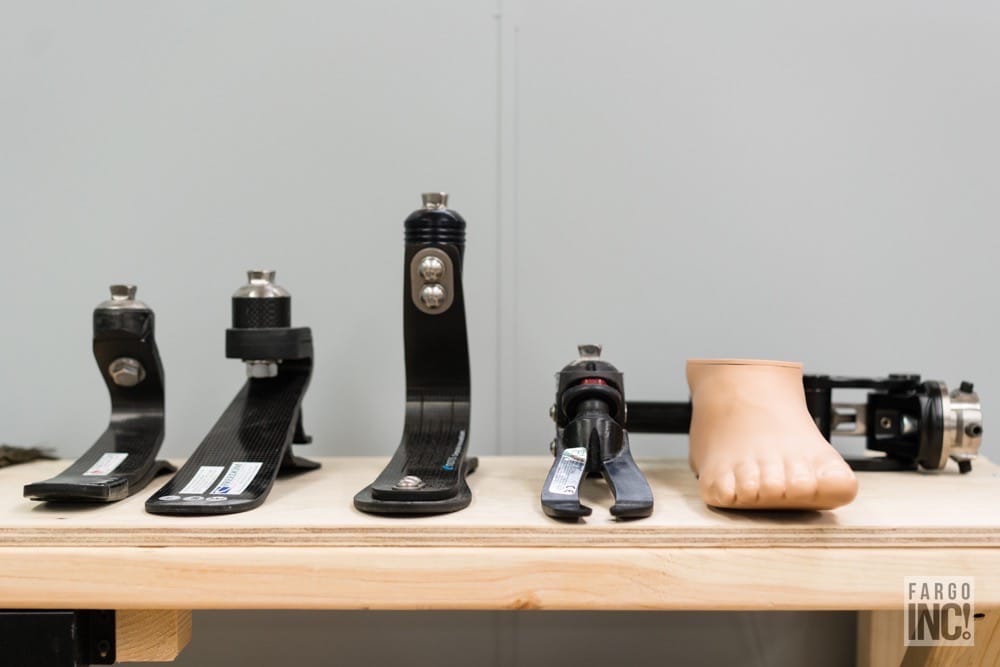
Early on, when Protosthetics was trying to figure out exactly which segment of the market to focus on, they went around and talked to doctors to find out what they were seeing the greatest need for.
“When we talked to them, they told us that they see one upper-extremity patient per year,” recalls Teigen, who adds that Protosthetics was initially focused on an upper-extremity product. “They told us that the No. 1 request they get is actually for a leg that patients can wear in the shower or a pool or just water wherever. With traditional prosthetics, you can’t wear your primary leg anywhere that can get wet or dirty.”
What they came up with was their flagship product, the Amphibian, which is a below-knee device that works for both daily and recreational activities. They’ve even built custom versions for a professional snowmobiler and a scuba diver.

While no one’s ever going to confuse it for the Ritz-Carlton, Teigen says they’ve made huge strides with the space since they took it over a few months ago.

Instead of purchasing and using existing machines, Protosthetics custom-builds their own 3D printers to the exact specifications and functions they need.
“If you think about one of our sockets, with the machines you buy off the shelf, there’s no way it would fit,” Teigen says. “Also, this pair of foot orthotics printing right now is probably 10 times faster, has a bigger build volume and the parts that come off it are probably 10 times stronger.

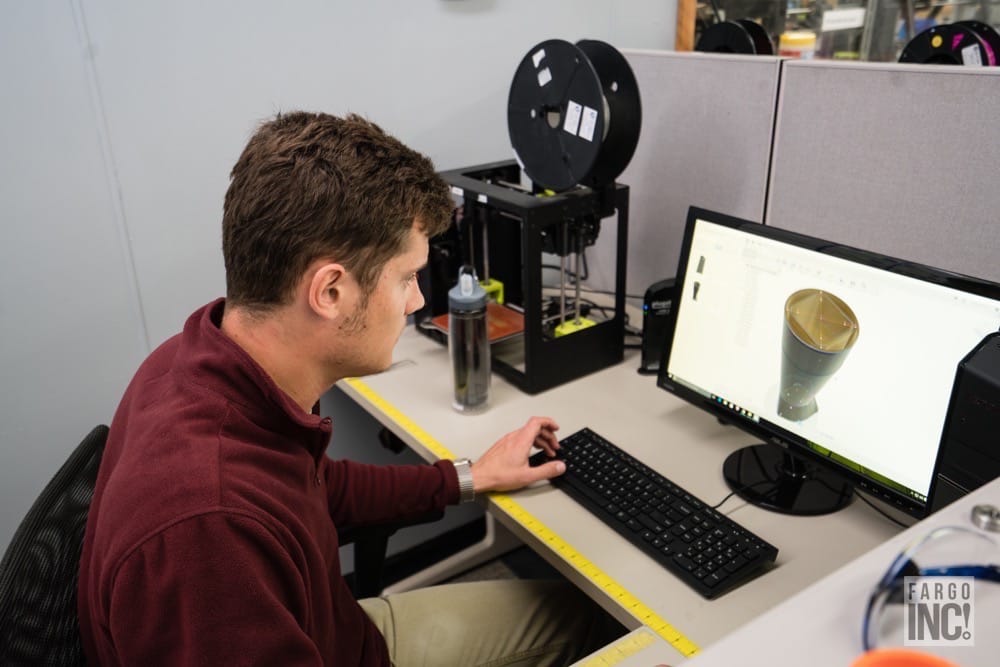
“The ability to design and build them ourselves allows us to design and build them specifically to the needs and requirements of orthotics and prosthetics. A lot of the machines you can buy off the shelf are really good for a lot of different purposes. Our machines are way better for our specific use.”
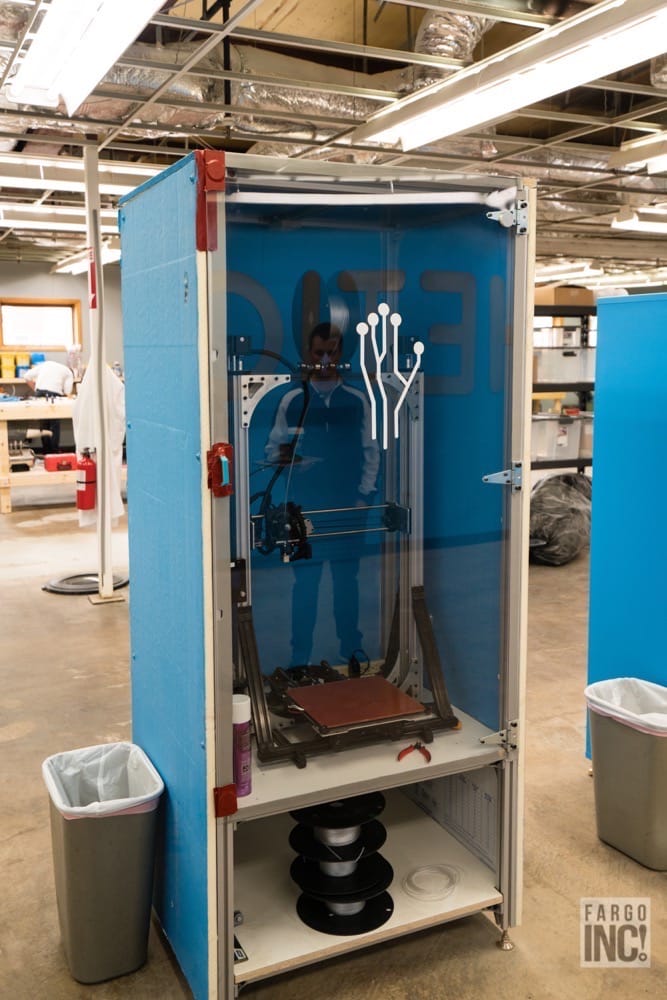
These big, blue boxes are essentially houses for 3D printers.
“They allow us to regulate humidity, temperature and a bunch of different things,” Teigen says. “It helps from a quality standpoint and gives us a little more control over the environment, which is nice.”
The eventual goal, he says, is to create a same-day turnaround for prosthetics and orthotics patients.
“Right now, with other suppliers, the turnaround is weeks,” Teigen explains. “Right now, you have patients coming from out of town—Valley City (North Dakota), for example—driving here for an appointment and then driving back. What we could do is: They’d come in the morning, we would build the prosthetic throughout the day and they’d come pick it up at the end of the day. That’s a huge value-add for the clinic, the patient, everyone.”
There are only a handful right now, but there will eventually be a “printer farm” of 32 “Tallboys” that will fill much of the office’s main space.
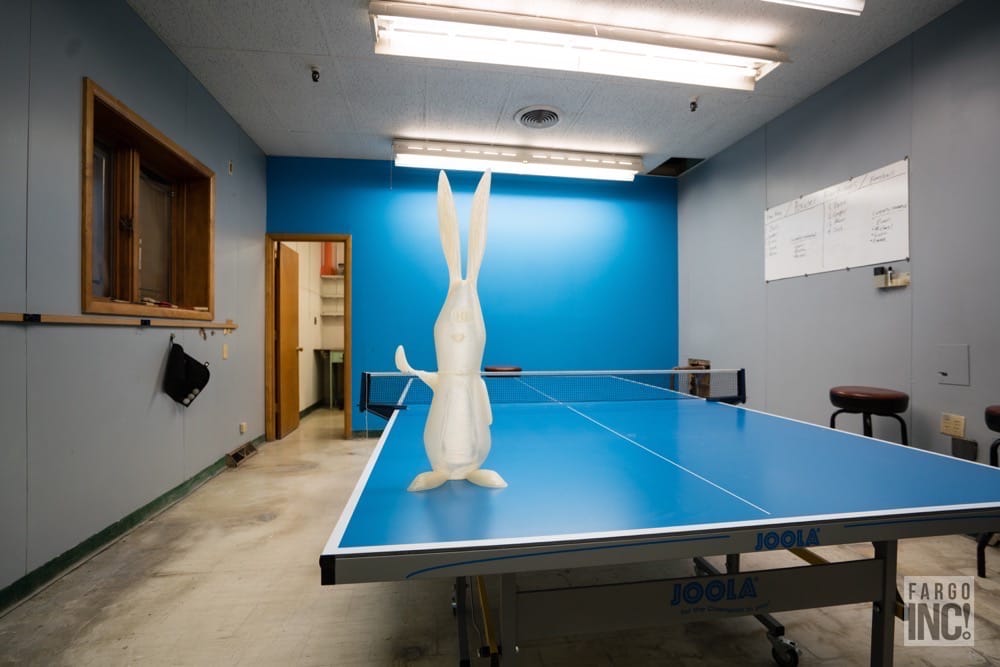
“Before I forget, there’s a story behind why we have a giant, four-foot rabbit in the office,” Teigen says. “We play ping-pong and foosball and have power rankings. The way it works is that you can challenge the person above you, and you can only challenge one above you.
“To challenge, you set this giant rabbit on their desk, and they have 15 minutes to accept the challenge. You get one challenge per week in ping pong and one in foosball. You work your way up.”
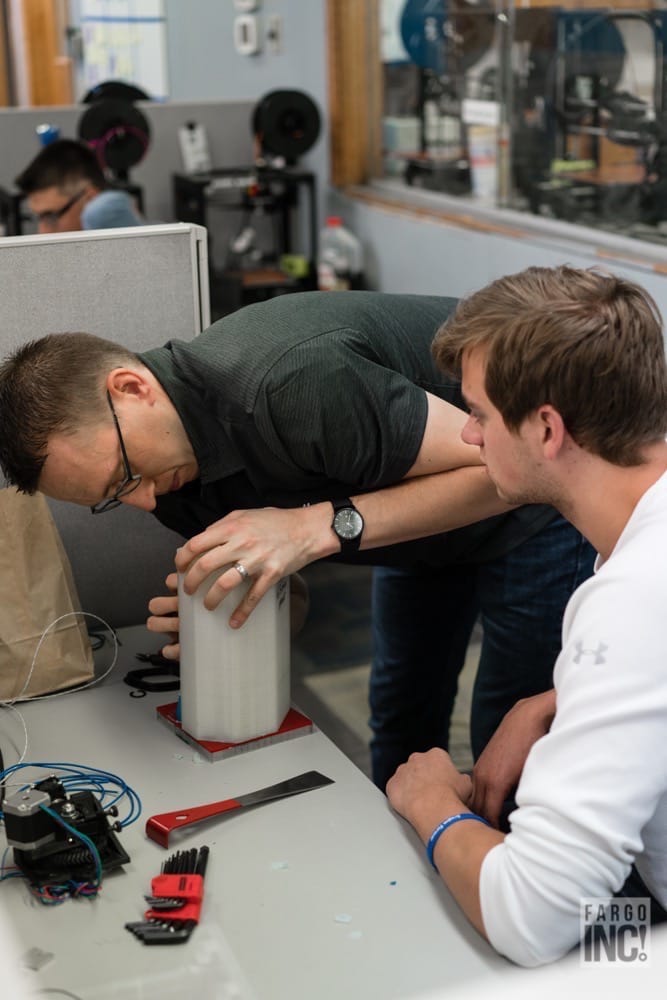
Teigen says that when he goes to trade shows, he’ll take the sockets and stand on them, sometimes even jumping up and down.
“It’s how we show off the durability of them,” he says.
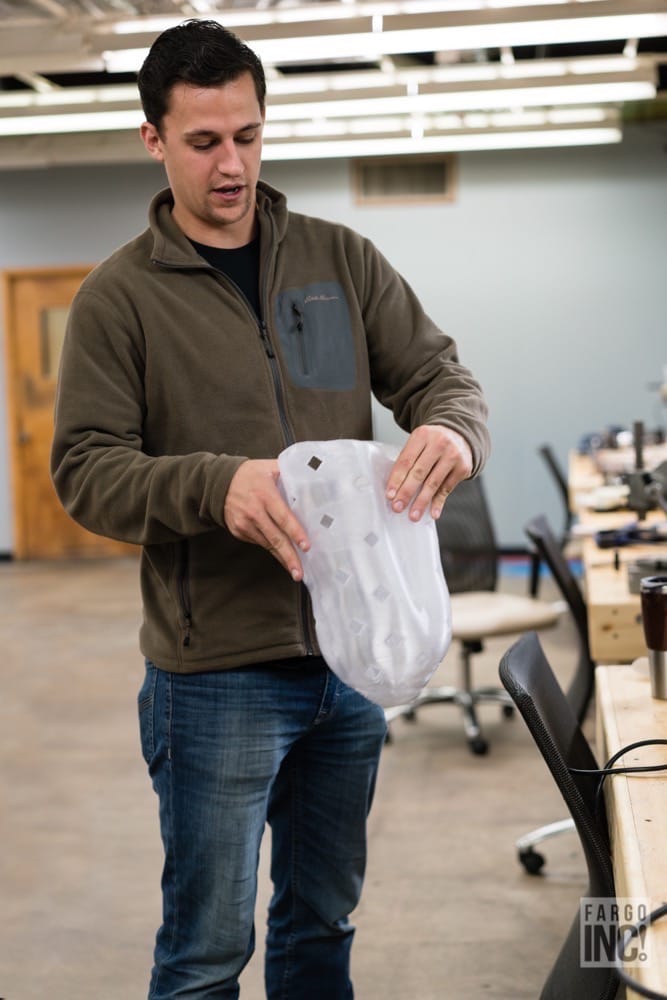
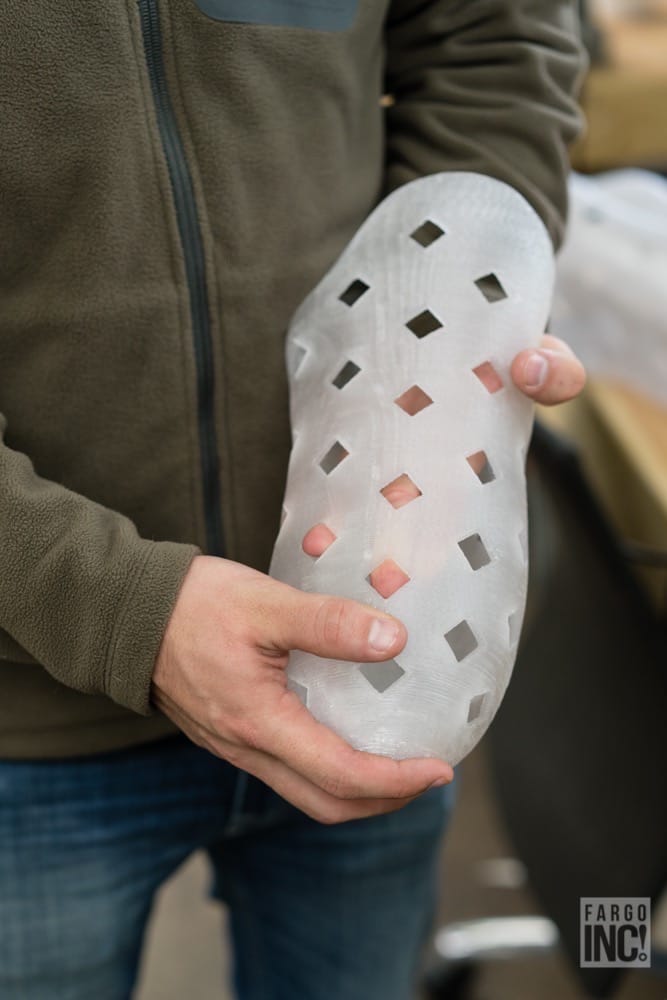
“This is something that can only be done using 3D printing,” Teigen explains. “You can visually see different areas of pressure in the socket by how much skin is poking through. And the reason we use the diamond shape is that printers can print to a 45-degree angle without any support materials. Per clinic, we do probably one of these per week.”

The Amphibian uses the Boa system, which is more or less a dial-based, ultra-durable shoelace system.
“You can kind of just clamp the leg in for more of an adjustable fit,” Teigen explains. “So when you’re in the shower and need to rinse the residual limb, you just pop the button, pop it out of the socket and then just pop your leg back in. It’s kind of like infinite adjustability.”
Protosthetics
Protosthetics.com
617 4th St. N, Fargo
